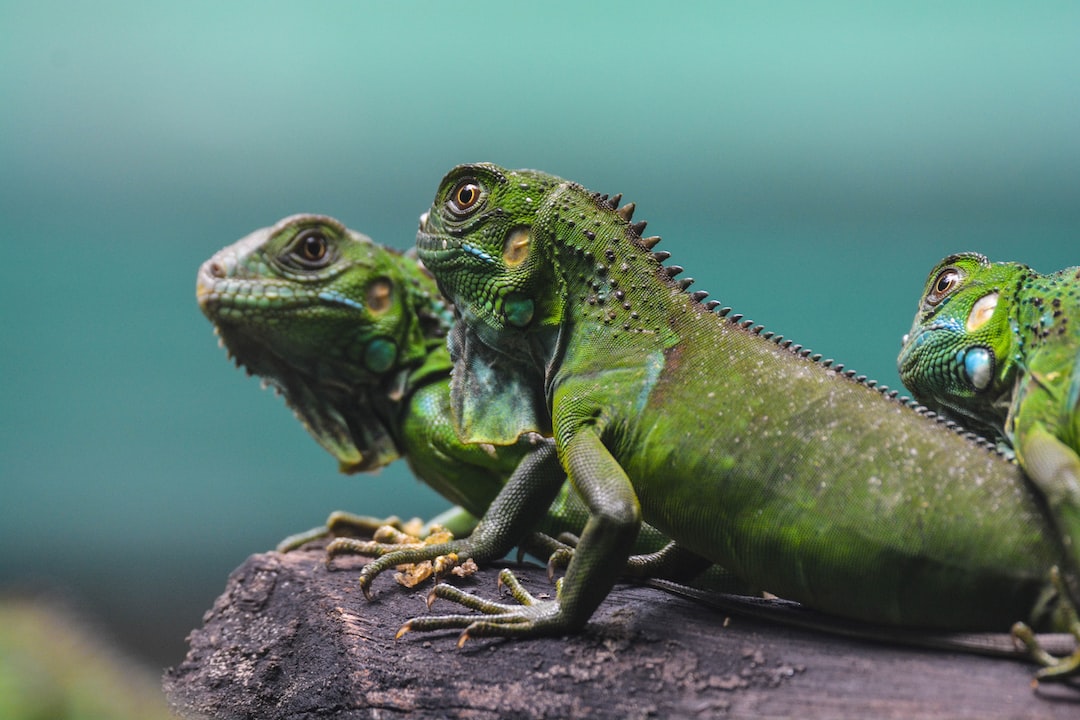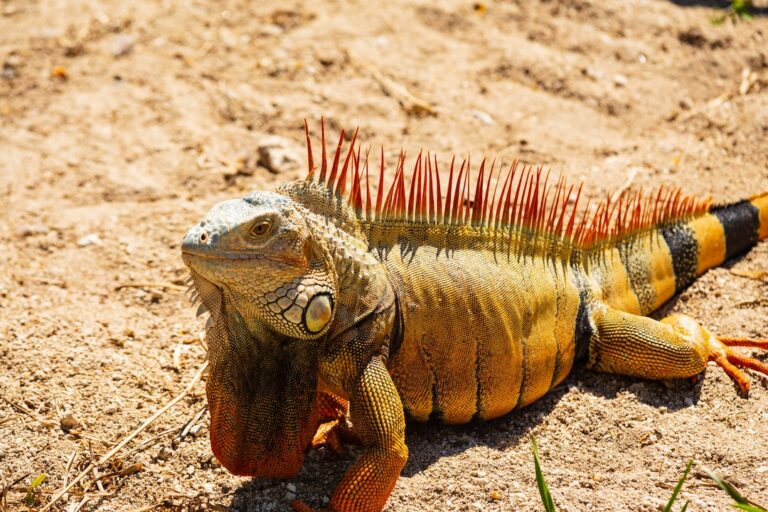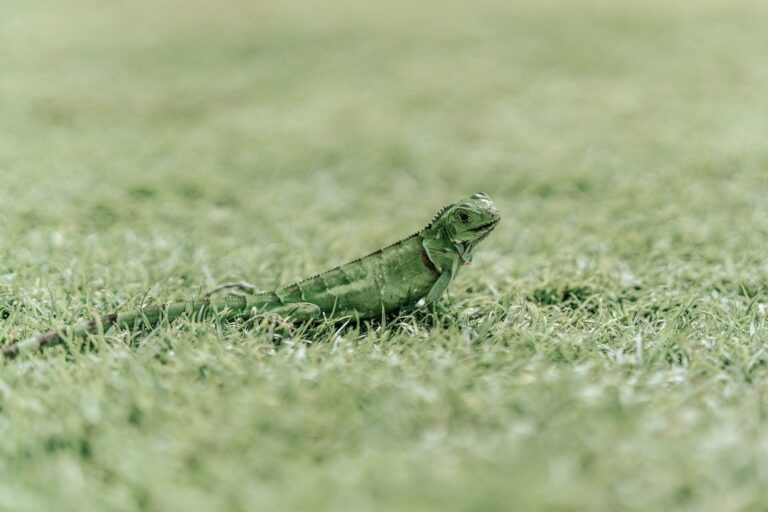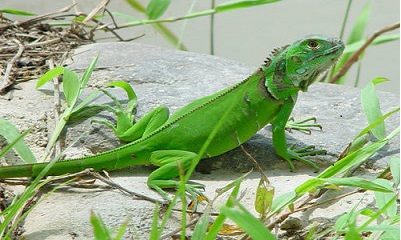Do Iguanas Eat Each Other?
Iguanas are a type of reptile that belong to the family Iguanidae. They are known for their distinctive appearance, with long tails, sharp claws, and a row of spines along their backs. Iguanas are herbivores, meaning they primarily eat plants and vegetation. Their diet consists mainly of leaves, flowers, fruits, and even some vegetables. It is important for iguana owners to understand their eating habits in order to provide them with a proper diet and ensure their overall health and well-being.
Understanding iguana behavior is crucial for their care and management. By knowing what they eat and how they behave in the wild, we can better replicate their natural environment in captivity. This includes providing them with the right types of food, temperature, humidity, and space to roam. Additionally, understanding their behavior can help us identify any potential issues or health problems they may be experiencing.
Table of Contents
Cannibalism in the Animal Kingdom: Is it Common?
Cannibalism, the act of one animal consuming another of its own species, is not uncommon in the animal kingdom. While it may seem shocking or gruesome to us as humans, it serves as a survival strategy for many animals. Cannibalism can occur for various reasons, including competition for resources, territorial disputes, or even as a means of population control.
There are several examples of animals that exhibit cannibalistic behavior. In some species of spiders, the female will eat the male after mating. This is believed to provide the female with additional nutrients needed for reproduction. In certain species of sharks, the largest and most dominant individuals will prey on smaller members of their own species. This helps maintain a balance within the population and ensures that only the strongest individuals survive.
The Occurrence of Iguana Cannibalism in the Wild
Research on iguana cannibalism in the wild is limited, but there have been documented cases of this behavior occurring. It is believed that iguana cannibalism is more likely to occur in areas where resources are scarce and competition for food is high. In these situations, iguanas may resort to eating each other as a means of survival.
The frequency of iguana cannibalism in the wild is difficult to determine, as it is not a behavior that is commonly observed. However, it is believed to be relatively rare and only occurs under certain circumstances. It is important to note that cannibalism is not a normal or healthy behavior for iguanas, and should not be encouraged or tolerated in captivity.
Reasons for Iguanas Eating Each Other
There are several reasons why iguanas may engage in cannibalistic behavior. One reason is natural selection and survival of the fittest. In times of scarcity, weaker or injured iguanas may become easy targets for stronger individuals looking to secure their own survival. By eliminating weaker members of the population, the stronger individuals increase their chances of survival and passing on their genes.
Territorial behavior and aggression also play a role in iguana cannibalism. Iguanas are known to be territorial animals, and they will defend their territory from intruders. This can lead to aggressive encounters between individuals, which may escalate to cannibalism if one iguana is unable to escape or defend itself.
Competition for resources, such as food and shelter, can also drive iguanas to eat each other. In areas where resources are limited, iguanas may resort to cannibalism as a means of obtaining the necessary nutrients for survival. This behavior is more likely to occur when there is a high population density and limited availability of food.
Iguana Territorial Behavior and Aggression
Territorial behavior is a common trait among iguanas. They will mark their territory by rubbing their bodies against objects and leaving scent markings. This behavior serves to communicate to other iguanas that the area is already claimed and should be avoided.
Aggressive behavior in iguanas can manifest in various ways, including head bobbing, tail whipping, and even biting. These behaviors are often a response to perceived threats or intrusions into their territory. Aggression can also be triggered by competition for resources, such as food or mates.
It is important for iguana owners to understand and recognize these territorial and aggressive behaviors in order to provide a safe and appropriate environment for their pets. Proper housing, including adequate space and hiding spots, can help reduce stress and minimize aggressive encounters between iguanas.
The Role of Competition and Scarcity of Resources
Competition among iguanas is a natural part of their behavior. In the wild, iguanas must compete for limited resources such as food, water, and shelter. This competition can be fierce, especially in areas where resources are scarce.
Scarcity of resources can have a significant impact on iguana behavior. When resources are limited, iguanas may become more aggressive and territorial in order to secure their share. This can lead to increased conflicts and even cannibalism if weaker individuals are unable to find enough food or defend themselves against stronger competitors.
In captivity, it is important to provide iguanas with an environment that mimics their natural habitat as closely as possible. This includes providing ample food, water, and hiding spots to reduce competition and minimize the risk of cannibalistic behavior.
The Impact of Human Intervention on Iguana Behavior
Human intervention can have a significant impact on iguana behavior. Habitat destruction, pollution, and climate change are all factors that can disrupt the natural balance of ecosystems and affect the behavior of iguanas and other animals.
For example, deforestation can lead to a loss of habitat and resources for iguanas, forcing them into closer proximity with each other and increasing competition. This can result in more frequent aggressive encounters and a higher likelihood of cannibalism.
Additionally, the illegal pet trade has had a negative impact on iguana populations. Many iguanas are captured from the wild and sold as pets, leading to a decline in their numbers in their natural habitats. This disruption to their populations can further exacerbate competition for resources and increase the occurrence of cannibalistic behavior.
Preventing Iguana Cannibalism in Captivity
Preventing iguana cannibalism in captivity starts with providing the proper care and environment for these animals. This includes providing a spacious enclosure with plenty of hiding spots and separate feeding areas to minimize competition. It is also important to provide a varied and nutritious diet that meets the specific nutritional needs of iguanas.
Regular monitoring of iguana behavior is crucial for early detection of any signs of aggression or territorial disputes. If any aggressive behavior is observed, it is important to separate the individuals involved to prevent injury or cannibalism.
Proper socialization is also important for preventing cannibalistic behavior in captive iguanas. Introducing iguanas to each other at a young age and providing positive interactions can help reduce aggression and establish a more harmonious social dynamic.
Signs and Symptoms of Iguana Aggression
Iguana aggression can manifest in various ways, and it is important for owners to be able to recognize the signs and symptoms. Some common signs of aggression in iguanas include head bobbing, tail whipping, hissing, biting, and puffing up their bodies to appear larger.
Aggressive iguanas may also display territorial behaviors such as marking their territory with scent markings or rubbing their bodies against objects. They may become more defensive and less tolerant of handling or interaction with humans or other animals.
It is important to note that aggression in iguanas can be a sign of stress or discomfort. If an iguana is displaying aggressive behavior, it is important to assess their environment and make any necessary adjustments to ensure their well-being.
Understanding Iguana Behavior and Cannibalism
In conclusion, understanding iguana behavior and cannibalism is crucial for their proper care and management. Iguanas are herbivores that primarily eat plants and vegetation. Cannibalism, while not common, can occur in the animal kingdom as a survival strategy.
Iguana cannibalism in the wild is believed to occur under certain circumstances, such as competition for resources and territorial disputes. Understanding the reasons behind this behavior can help us provide a suitable environment for captive iguanas and prevent cannibalistic behavior.
Human intervention can have a significant impact on iguana behavior, both in the wild and in captivity. Habitat destruction, pollution, and the illegal pet trade can disrupt their natural habitats and increase competition for resources.
Preventing iguana cannibalism in captivity involves providing proper care, monitoring behavior, and ensuring a harmonious social dynamic. Recognizing signs of aggression and addressing any underlying issues can help maintain the health and well-being of these fascinating reptiles.
If you’re curious about the eating habits of iguanas, you might also be interested in learning about where they sleep. Reptile Friend has an informative article on “Where Do Iguanas Sleep?” that explores the various sleeping habits and preferences of these fascinating creatures. From tree branches to burrows, iguanas have unique sleeping habits that are worth discovering. To learn more about this topic, check out the article here.







